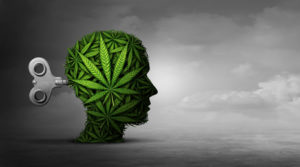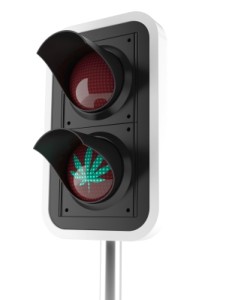PREPARING to Legalize Cannabis
Marijuana legalization in the US has been steadily moving forward in a piecemeal, state-by-state way for several years now. According to the National Conference of State Legislators, as of April 24, 2023 38 states and the District of Columbia have legalized cannabis products for medical use, and 22 states and the District of Columbia have legalized the recreational use of marijuana. Apparently anticipating the inevitability of legalization on a national level, Congressman Dave Joyce introduced H.R. 2598, the PREPARE (Post-Prohibition Adult Use Regulated Environment) Act on April 13, 2023, “To establish a Commission on the Federal Regulation of Cannabis to study a prompt and plausible pathway to the Federal regulation of cannabis.” Hakeem Jefferies, the Minority Leader of the House of Representatives, told Forbes: “The PREPARE Act will give lawmakers a bipartisan platform to legislate not only a fair and responsible end to prohibition but also a safer future for our communities.” However, two studies published in May of 2023 suggest that ending the so-called “prohibition” of marijuana may not be a responsible or safe action for some members of our communities.
The movement towards recreational marijuana legalization is promoted by a widespread sense that casual cannabis use is benign. However, a Columbia University study by Sultan et al, “Nondisordered Cannabis Use Among Adolescents,” found that teens who used marijuana recreationally were 2 to 4 times more likely to develop depression and suicidality than teens who didn’t use it at all. The lead study author, Ryan Sultan, said in a Columbia University press release, “We were surprised to see that cannabis use had such strong associations to adverse mental health and life outcomes for teens who did not meet the criteria for having a substance use condition.”
Their study found that adolescents with nondisordered cannabis use (NDCU) and cannabis use disorder (CUD) had increased odds of adverse psychosocial events. Both were significantly associated with adverse psychosocial events in a stepwise gradient manner. Sultan said their study was the first to identify that subclinical, nondisordered cannabis use has “clear adverse and impairing associations for adolescents.”
In line with past studies, cannabis use among adolescents was associated with greater odds of depression and suicidal ideation. These in turn were associated with long-term adverse educational and occupational attainment outcomes “and increased risk of harmful substance use in adulthood.” There was also evidence of worse executive control, decreased attention and deficits in episodic memory. Compared to nonusers, adolescents in NDCU and CUD groups were around 2-3 times more likely to experience cognitive deficits.
We observed a stepwise severity gradient for the odds of psychosocial associations among nonuse, NDCU, and CUD. This severity gradient was also observed in prevalence values for adverse psychosocial events across all degrees of cannabis use. Furthermore, this observation was corroborated by a stepwise cannabis use frequency trend between NDCU and CUD.
The researchers thought their findings were particularly concerning given the increasing popularity of marijuana as states continue to move toward making the drug legal. They concluded that with the growing acceptance of both medicinal and recreational cannabis use in the US, “clinicians should be vigilant to screen, evaluate, and treat cannabis use in adolescents.”
The second study was a huge Danish study of over 6 million people that discovered a strong association between cannabis use disorder and schizophrenia. The research team included Nora Volkow, the Director of the National Institute on Drug Abuse (NIDA). The study, “Association between cannabis use disorder and schizophrenia stronger in young males than in females,” analyzed health records spanning over 5 decades in order to estimate the fraction of schizophrenia cases that could be attributed to cannabis use disorder. A Scientific American review of the study said it found up to 30% of the schizophrenia diagnoses—around 3,000 in total—could have been prevented if men between the ages of 21 and 30 had not developed cannabis use disorder. The Scientific American review said:
The Danish epidemiology study does not offer hard-and-fast proof of the cannabis-schizophrenia connection, which could be accomplished only through randomized controlled trials. But this link is supported by the fact that marijuana use and potency have risen markedly—from 13 percent THC content in Denmark in 2006 to 30 percent in 2016—alongside a rising rate in schizophrenia diagnoses. “While this isn’t proving causality, it’s showing that the numbers behave exactly the way they should, under the assumption of causality,” says Carsten Hjorthøj, the study’s lead author and an associate professor at the Mental Health Services in the Capital Region of Denmark and the University of Copenhagen.
This study won’t resolve the long-running debate over the statistical cause-and-effect relationship between cannabis and schizophrenia. For example, David Nutt thought the research was intriguing, but it also raised more questions. He asked whether some of the cases may have been misdiagnosed with schizophrenia rather than an alternative diagnosis—like cannabis-induced psychosis. Along with the researchers, he pointed to the lack of data on the participants’ frequency of cannabis use or age of first use or the amount of THC in the products they used.
However, Robin Murray, a professor of psychiatric research at the Institute of Psychiatry at King’s College London and co-editor in chief of the medical journal Psychological Medicine said the Danish study examined specific factors more closely—gender and age—than previous investigations of the possible link between cannabis and schizophrenia. He thought it added to the growing body of research that has gradually discounted other factors to cannabis as a trigger for schizophrenia, making the connection more plausible, “So causal effect is almost certain.” For more on cannabis and schizophrenia, and Robin Murray’s own research into marijuana, see “Gambling with Cannabis and Psychosis” and “Cannabis and Psychosis: More Reality Than Satire.”
Psychiatric Times periodically published articles to educate its readers on cannabis and its association with schizophrenia. In “Cannabis Confusion” John Miller noted that he’s read numerous articles in the psychiatric literature that made conflicting conclusions about the effects of cannabis on cognition, its risk of psychosis, addictive potential, and its effects on suicidality, depression, anxiety, and pain relief. He thought there was only one consistent finding: Heavy cannabis use during brain development increases the risk of psychosis and cognitive impairment.
A likely explanation for the wide-ranging discrepancies is that cannabis is the product of a plant that is not a single molecule or pure substance. Many articles with the word cannabis in the title can be discarded as meaningless unless the authors took the additional step of testing all of the cannabis used by their study subjects for the quantitative and qualitative molecules present.
He noted that as more states legalize cannabis for medical or recreational use, it is likely that federal laws will eventually make cannabis use legal on a national level. “That will create an opportunity to require a comprehensive analysis and disclosure of all the components of the numerous strains of cannabis currently being sold in state dispensaries or on the streets.”
Fuller Torrey, a research psychiatrist specializing in schizophrenia, commented in “Is Cannabis Use Increasing Schizophrenia?” on an earlier Danish study that claimed the use of cannabis was a likely cause of the increasing incidence of schizophrenia over the past two decades. He noted that an increasing incidence of schizophrenia, or psychosis in general has also been reported in England, Switzerland and Canada. Torrey also gave citations and links to the various studies that supported his statement. He also thought the move towards legalizing recreational use in the US meant that “a possible relationship between cannabis use and increasing schizophrenia is potentially very important and needs to be confirmed.” He said:
It is an embarrassment to American medicine that NIMH has so little to contribute on such an important question. At a minimum, NIMH should issue a request for proposals to try and confirm the Danish study in another country which has appropriate data so that we will have a definitive answer to this question.
In “Does Cannabis Cause Psychosis?” Brian Miller reviewed several research studies of the relationship between cannabis and psychosis and concluded there was a robust association between cannabis use and the risk of psychosis, with evidence of a dose-response relationship, “which supports the plausibility of a causal association.”
Comorbid cannabis use is highly prevalent in psychosis (especially FEP [first episode of psychosis], with declining use over time), with strong evidence for an earlier age of onset of illness, as well as effects of psychopathology and cognition. In patients with psychosis, continued cannabis use is associated with antipsychotic nonadherence, illness relapse, and longer hospitalizations. These findings raise the possibility of a dose-response relationship between current cannabis use and transition to psychosis. Findings suggest that targeting cannabis use during the UHR [ultra-high risk] period may confer significant benefits on long-term outcomes. Continued cannabis use is also a potential target for intervention to improve antipsychotic adherence and other outcomes in patients with psychosis. Future research in this area is clearly warranted to elucidate mechanisms and novel treatment strategies for relevant populations.
Further research is needed to clarify the potential harms and adverse effects from using cannabis and marijuana products. While not yet proved conclusively, it does seem that there is a causative connection between schizophrenia and using marijuana for some people, but not for all people. Although this is more evident with heavy users (those who could be classified as having a cannabis use disorder), the Sultan et al study found there were even adverse mental health and life outcomes for teens that used marijuana, but did not meet the criteria for a substance use condition.
Cannabis use among adolescents increased the odds of depression and suicidal ideation among adolescents. Consistent with past research, there was also evidence of worse executive control, decreased attention and problems with episodic memory. When compared to nonusers, adolescents who used marijuana were 2 to 3 times more likely to experience cognitive deficits.
Heather Baccus spoke to America Reports on Fox News of how she believes her son’s marijuana use led to his psychotic break a few months before he committed suicide in July of 2021. Randy began using marijuana when he was 15 and had a cannabis user disorder within a year. By the time he was 21, he was experiencing delusions and paranoia. Heather said he thought it was helping him with his anxiety and depression, which she said he did not have until after he began using marijuana.
He knew that he would manage and function fairly well in life, but he was paranoid. He thought his roommates were out to get him. He thought that people at work were out to get him. He would quit a job quickly. He accused one of his employers of being in the mob. When he had a full-blown attack in March of 2021, he called us and said the mob was coming after him, that they were coming after us, and he just was out of sorts.
There is a video clip of a short interview with Nora Volkow, the director of NIDA and a coauthor of the above cited Danish study in the Fox News article. She said marijuana is not as benign as we would like it to be and is associated with psychosis. “High doses, regular use can be harmful.” She said there were likely three possibilities. Marijuana use triggers an episode in some individuals that have a latent risk for psychosis. In others, it may just accelerate the timing of the psychosis. Finally, it may also trigger a psychotic event that would not otherwise happen.
The PREPARE Act sounds like a responsible, proactive step to take before we move towards national legalization of marijuana. But I don’t believe we are thinking about the concurrent increase with adverse mental health concerns like depression, suicidal ideation and psychosis. What do we need to do to PREPARE for that?



